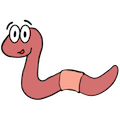[Note- Here are the notes I took that day, edited for clarity]
Notes – Day 2 Session 4
Developmentally appropriate early childhood environmental education: Practices that engage children and foster a nurturing relationship with the natural world using the Early Childhood Environmental Education Guidelines for Excellence
Environmental Education for Children
1 1/2-hour session — limit 4 presenters
Preschoolers
11/16/2017 1:00 PM – 2:30 PM Room B306
Georgia World Congress Center
Sheila Williams Ridge, Director, University of Minnesota Laboratory School
When we think about developmentally appropriate practice, we often think of hands-on and child-focused learning experiences that engage children physically, cognitively, socially, and emotionally. Early childhood environmental education is also focused on hands-on experiences that engage children’s bodies and minds centered on a natural phenomenon. Using the North American Association for Environmental Education’s (NAAEE) Early Childhood Environmental Guidelines for Excellence, a free publication available online, we will explore a variety of nature experiences and activities for the early years and how to implement child and nature focused activities in early childhood programs. We will discuss the benefits of nature-based experiences both indoors and outdoors, addressing risk and safety, and through the six key characteristics, investigate the 1) program philosophy, purpose, and development; 2) developmentally appropriate practice; 3) play and exploration; 4) curriculum framework for environmental learning; 5) places and spaces; and 6) educator preparation.
*Defining Environmental Education
Belgrade Charter (1972) To develop a world population that is aware of, and concerned about the environment and its associated problems, and which has the knowledge, skills, attitudes, motivations, and commitment to work individually and collectively towards solutions of current problems and the prevention of new ones
#Defining Early Childhood Environmental Education
Ruth Wilson’s definition (1994): the development of a sense of wonder; appreciation for the beauty and mystery of the natural world; opportunities to experience the joy of closeness to nature; and respect for other creatures.
Early Childhood Environmental Education guidelines
NAAEE
Ruth Wilson – Learning in bloom
fish – pool
curiosity – name for kids
fostering their curiosity
teach compassion – interest
Q where it was going
story of their location’s family camping trip
inviting families to be a part of it
conserve – wasting water etc [I wonder what would happen when the kids see all the water being used up]
I’m noticing that happens outside
listening – seeing what they know and cultivate
that language
composting
meal worms – oats and snack leftover aquarium
paper towels for worm bedding
thinking about the child and where they are
us to curriculum
nature unique experiences depending on where you are
gardening – spices to cook
lettuce – salad
OSH – training – plant herbs etc
{rule: car rides – TV on only outside of the city}
dead squirrel – kids marked out spot with rocks
squirrel was very old (said animal control, yet they went through the process of getting someone to show up and explain that to the kids)
they have no predators in the city
when you change your environment
children show wonder
interdependence
when you focus your curriculum (on local)
are pumpkins grown in your area?
Is it meaningful or abstract?
what do you notice about ______?
A fellow from the audience told us about bamboo – in china – they make all sorts of beautiful toys for their children – they are creative – they don’t think they are creative, they are just resourceful
gardening interdependence
master gardener volunteers – extension
community service
—
*Key Characteristic 1
Program philosophy, purpose, and development
-Focus on nature and the environment
-Focus on the education of young children
-Culturally appropriate goals, objectives, and practices
-Health and safety
-Ongoing evaluation and assessment
-partnerships
-Interpersonal – Intergenerational relationships
{ongoing assessment
what do you do and why do you do it?
It’s less work to listen to them and cater curriculum to them
developmentally appropriate practice}
—
*Key Characteristic 2 [no exact notes taken likely something about risk]
how can I make this safe? VS how do I teach kids to know how to be safe?
the monkey bars are always the same
– for a challenge they want (to climb on top, turn upside down, skip?)
vs tree for them to climb *it is always changing – slippery when wet etc
—
*Key Characteristic 3
Play and Exploration
-Use of the natural world and natural materials
-Play and the role of adults
—
*Key Characteristic 4
Curriculum framework for environmental learning
-social and emotional growth
-curiosity and questioning
-development of environmental understanding
-skills for understanding the environment
-a personal sense of responsibility and caring
-physical health and development
—
*Key Characteristic 5
Places and spaces
-spaces and places to enhance development
-natural components
-comfortable for both children and adults
-maintenance and usability
-health, safety, and risk
-environmental sustainability
—
*Key Characteristic 6
Education Preparation
-foundations of early childhood environmental education
-professional responsibilities of the educator\
-environmental literacy
-fostering learning
-assessment and evaluation
—
their documentation is open to the public
idea- paper towels instead of in a plastic bag to watch a bean seed sprout, it is quite easy to keeper with spray bottles
(re outside environment for the kids) whose job is it?
maintenance
gardening
is lasting longer the goal?
*How are the needs of children with different learning needs incorporated into your program?
idea – cloth napkins – cutting new ones
[my struggle- looking presentable vs looking lazy]
natural school alliance
NAAEE – North American Association for Environmental Education
The instructor passed out printed copies, but digital copies of the book Early Childhood Environmental Education Programs: Guidelines for Excellence are free online
